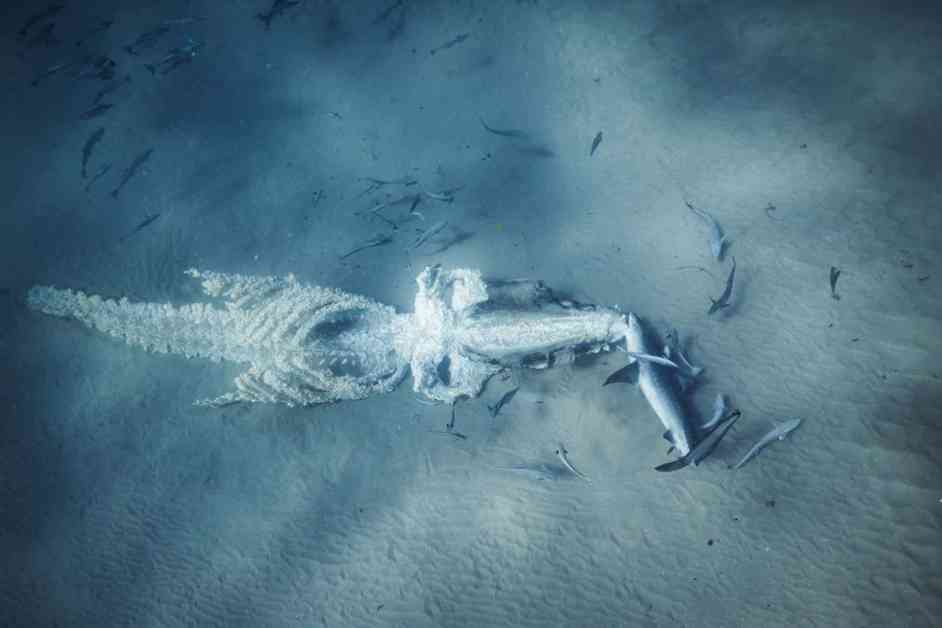Computer models can help predict the drift patterns of floating whale carcasses, allowing authorities to make informed decisions about how to manage these remains in the ocean. Dead whales can attract sharks and create logistical challenges if washed ashore on busy beaches. Additionally, if carcasses drift into shipping lanes, they can pose a significant hazard to passing vessels.
While most dead cetaceans do not make it to shore, around 30 to 40 carcasses end up stranded on Australian beaches each year. These numbers have been on the rise since the decline of commercial whaling in the 1980s. Various methods are used to deal with stranded whale carcasses, including burial, landfill disposal, composting, rendering into biodiesel, or towing out to sea.
Olaf Meynecke and his team at Griffith University in Queensland, Australia, have been studying the drift patterns of dead whales to better understand how these carcasses move in the ocean. By closely monitoring a dead humpback whale off the Queensland coast, they discovered that wind strength plays a significant role in the initial drift direction of a floating carcass.
Using satellite trackers and a search-and-rescue computer model, Meynecke and his team were able to simulate the drift patterns of dead whales based on various environmental factors. The results showed that the predicted locations were accurate in the first few days but became less precise after six days of drifting.
The research aims to provide local authorities with a tool to determine the feasibility of towing a dead whale out to sea and predict where it will end up. This information is crucial for managing dead whale carcasses in a cost-effective manner while also preserving nutrients in the ocean food chain.
By studying more carcasses and exploring different scenarios, researchers hope to improve the accuracy of drift predictions for whale remains. This research not only benefits local authorities in decision-making but also contributes to the overall understanding of how floating objects move in the ocean. Ultimately, the goal is to find sustainable and efficient ways to manage dead whale carcasses to minimize environmental impact and logistical challenges.

